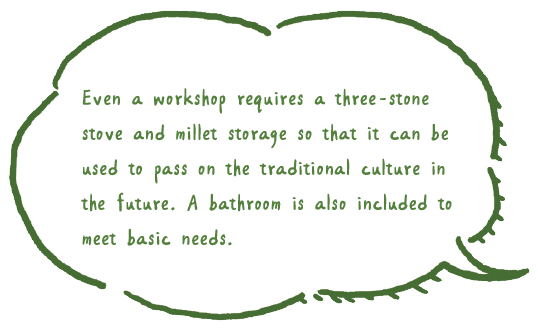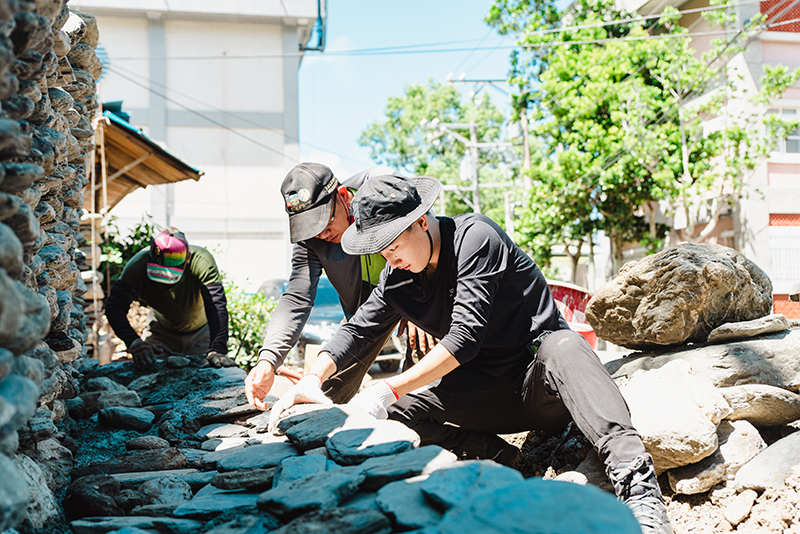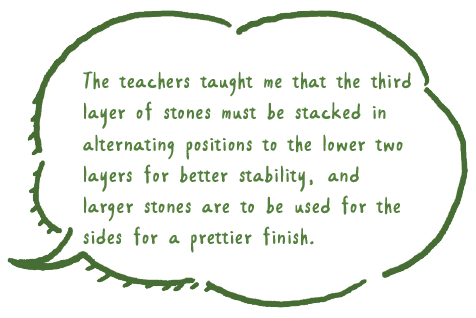The stone materials scattered in the mountain were all once homes to the Bunun. But here on flat land, a modern Bunun stone slab house is being built. Stacking stone slabs is like playing a jigsaw puzzle, there is a trick to stacking.
There is no fixed layout to the Bunun family house, some are in a reversed U-shape, some are square-shaped; some have windows or skylights, and some are above the ground or semi-underground. There are also a variety of ways to stack the stone slabs, which mainly depend on the type of stone materials collected. If the stones are mostly flat, the herringbone pattern may apply; if the stones are mostly round, then they are stacked on top of one another from the ground up in the order of large to small sizes.

Grain storage is usually found in the center of the family house from the entrance, and the standard layout involves one stove on either side of the grain storage. But on flat land, the lower altitude means higher ambient temperature, so most family houses have only one stove. For indigenous peoples, stoves serve as a way to bring a family together and keep the family house rich with life.
Only members of the family or members of friends’ families are allowed inside the indigenous family house; to host non-family members, they will dine outside the family house.
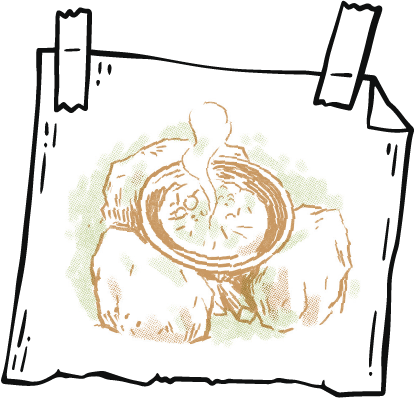

Some family houses will drill holes in the stone slabs, then tie them up and secure them with rattan as rope; while others will cover the top with silvergrass, tree bark, and wood as roof. Checking for stone slabs with drilled holes in the remaining structure is a way to identify the method applied.
There is a Bunun taboo where only members of the family can climb onto the roof of that family house, if a female accidentally steps onto someone else’s roof, she will have to marry into that family. The Bunun believes that outsiders might bring bad influences to the family or the spirits within.

Some Bunun family houses will have a pigsty nearby, since pigs are in the habit of digging and wood frames tend to collapse more easily, they will use bulkier stone slabs instead.
Pigs are essential to the Bunun. “Pig slaughtering” symbolizes making a pact, which signifies recognition and acceptance by that family. Therefore, when children get engaged or married, the family will slaughter a pig and share the pork.
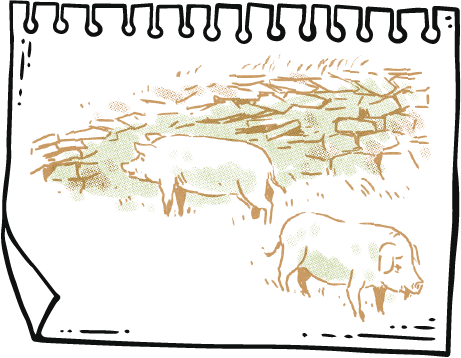

The Bunun settlement is generally formed by families or friends’ families. Even if you don’t share the same last name, you move as a pack with the stronger family leading the weaker, keeping and watching each other’s back.
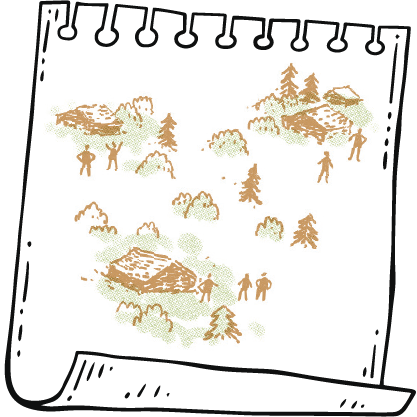

The Rukai and Paiwan people also build houses with stone slabs, but they do it more meticulously. The reason is that the Bunun settlements migrate more frequently, and since they can’t take the house with them when they move, they only care if it’s stable enough to not collapse when the house is being built.

When Kau visited the old Asang Kasin Community and saw the remains of the many stone slab houses, he came up with the idea to “build a stone slab house myself”. Upon returning home, Kau observed the different types of stone slab houses in Laipunuk in the mountain, conducted research, and interviewed elders, before finally deciding to build a stone slab house on flat land as his wife’s workshop.
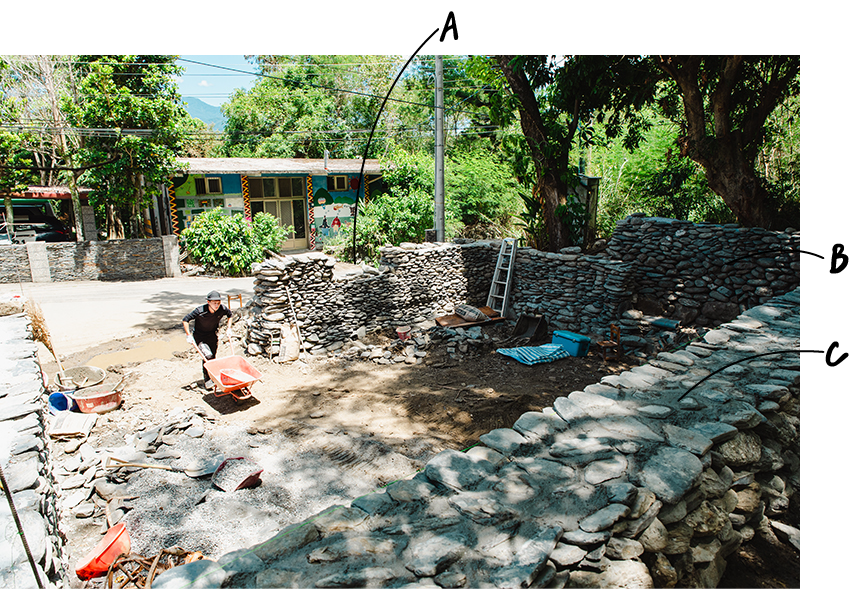
A:If there are any, windows in traditional family houses are mostly small and used as gun stands. Kau designed this window for natural lighting.
B:Kau applied to a local river management office to collect riverbed rocks. Washed by the river, the stones are paler in color compared to the ones in the mountains. The riverbed rocks vary in sizes.
C:To prevent typhoons and earthquakes, mortar is filled in between the stones in this family house to stand firm on flat land.
